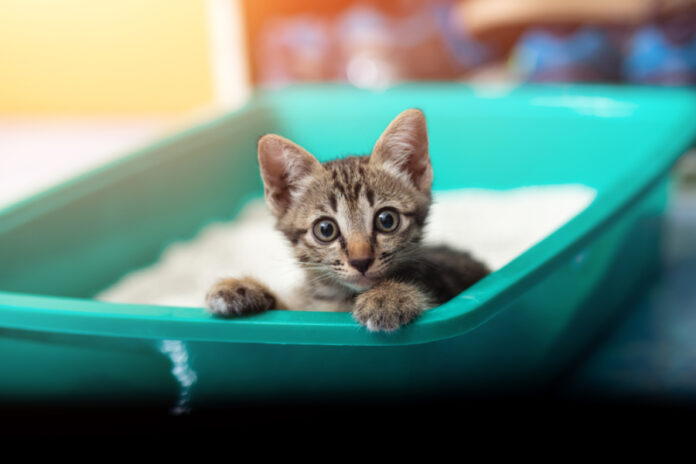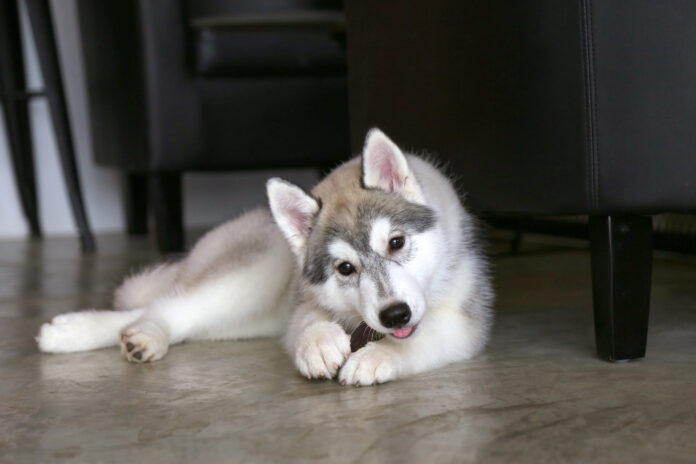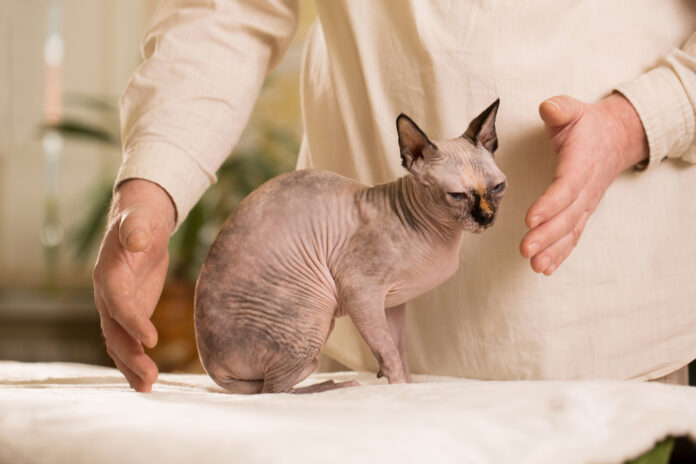What Can Your Cat’s Poop Tell You About Her Health?

As a cat parent, you know scooping the litter box is an important part of caring for your kitty. And while it may sound unpleasant, it’s also important to pay attention to what’s happening inside the box. It gets you acquainted with your cat’s normal elimination patterns, giving you a useful indicator of her overall health — and alerting you when something might be going wrong. This article takes a closer look at cat poop, and what it may be telling you about your feline friend’s health.
PERFECTLY NORMAL POOP
Your cat’s feces indicate what’s happening inside her body. It’s a natural health monitor. Veterinarian Dr. Vicki Thayer describes normal cat poop as: “Formed and firm, dark brown, with nothing on the surface such as blood or mucus.”
Did you know? You may not think of your cat’s poop as a gem, but you can still apply the four C’s of gemstone jewelry to it — color, clarity, carat weight, and cut. In the case of your cat, color, content, consistency and “chunkload” provide invaluable information about her health.
1. COLOR
 A normal, healthy stool is commonly characterized as “poop brown”, a color most people recognize. “The brown color is due to bilirubin, the passage of bile out of the liver and gallbladder into the digestive tract,” says Dr. Thayer. Sometimes, certain meats create a darker brown.
A normal, healthy stool is commonly characterized as “poop brown”, a color most people recognize. “The brown color is due to bilirubin, the passage of bile out of the liver and gallbladder into the digestive tract,” says Dr. Thayer. Sometimes, certain meats create a darker brown.
The overall color of your cat’s poop can run the gamut and may or may not be significant. Because of this variation, a vet cannot diagnose a condition based only on color. There are several factors to evaluate and piece together. Some colors to watch for include green, black, orange, and white.
GREEN: “Bright green might be due to rapid transit through the gastrointestinal tract, when the bacteria hasn’t had time to break down the bilirubin that leads to a brown color,” says Dr. Thayer.
RED: While some flecks of red could come from food ingredients, the obvious presence of bright red blood signals a problem such as inflammation in the GT tract.
BLACK: “Black stools are usually due to an upper GI bleed, tumor or ulcer. Those can be very significant things to watch for, especially in older cats, and could signal intestinal cancer.”
ORANGE: An orange color could be caused by diet, an ingredient in your cat’s food, or medication.
WHITE OR GRAY: “A white or clayish color could be related to a gallbladder obstruction,” says Dr. Thayer.
Did you know? “With exocrine pancreatic insufficiency (EPI), which means there aren’t enough pancreatic enzymes to help digestion, you can see greasy as well as clay-colored stools.”
2. CONTENT
The surface of the stool also provides helpful information. You’ll normally see a slight bit of mucus coating the poop; that’s normal, since mucus helps lubricate the colon lining. Increased or excessive mucus could mean there’s an issue. “Mucus usually comes from the colon, so it can indicate a problem like colitis,” advises Dr. Thayer.
Did you know? “In cats, fresh blood on the stool does not necessarily mean intestinal cancer,” says Dr. Thayer. “I see it with colon issues such as colitis, or intestinal parasites.” It doesn’t rule out cancer entirely, though, so it’s a good idea to see your veterinarian.
Looking inside the stool also gives clues. Hair is one of the most common substances seen in a cat’s poop due to normal grooming. Other items could include plant material or intestinal parasites. Some cats eat clay litter when they are anemic. If you notice an unusual foreign object in your cat’s stool, call your vet.
3. CONSISTENCY
Normal cat poop is firm, but not dry. “Hard, small, round pellets, especially in older cats, can indicate more moisture reabsorption, which can signal an underlying problem like kidney disease, co-morbidities like hyperthyroid disease, and diabetes,” cautions Dr. Thayer. “Alternatively, they’re just not taking enough water in for one reason or another.”
At the other end spectrum is diarrhea. Stools can be very moist, soft and loosely-formed. They may feature a pudding-like texture that’s partly liquid, without a defined shape, or the poop might be fully liquid with no texture. Diarrhea also ranges in color.
Did you know? If your cat’s litter box deposits are consistently not within the normal range, it’s time to make a veterinary appointment.
4. “CHUNKLOAD”
The size and quantity of normal poop should correlate to the size of your cat. Adult cats pass stools once or twice daily while kittens may go more often. Volume can depend on the cat’s diet, including what and how much is eaten.
Did you know? Diarrhea can make stool volume appear larger.
Examining your cat’s poop isn’t something you’ll enjoy, but noting any unusual changes can tell you a lot about her well-being, and even help catch health problems early on.




